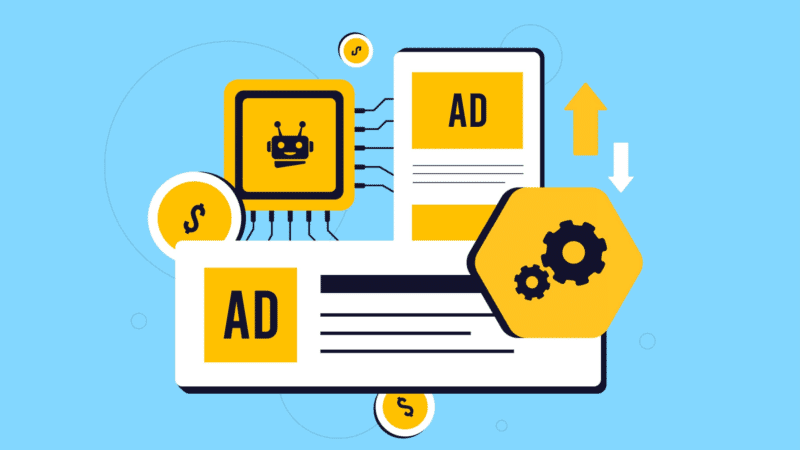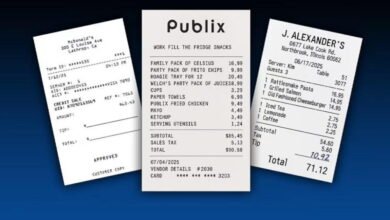Streamline Google Ads Workflow Using ChatGPT API Automation

▼ Summary
– Utilizing the ChatGPT API can automate repetitive tasks in Google Ads workflows, enhancing efficiency.
– The guide provides steps for setting up the API, including creating an OpenAI account and generating a confidential API key.
– The ChatGPT API operates on a pay-as-you-go model, with costs detailed for input and output tokens.
– Various tools like Google Apps Script, Python, Node.js, and Zapier can be used to call the API based on user expertise.
– Real-world use cases include optimizing product feeds, auditing search term waste, and automating Google Ads account audits.
If you’re still manually entering prompts into ChatGPT to generate ad copy, you’re not fully leveraging its potential. By utilizing the ChatGPT API, you can automate repetitive and time-consuming tasks within your Google Ads workflow, streamlining your processes significantly.
You can integrate GPT-4o into scripts, Google Sheets, and custom-built applications to tackle various challenges, ranging from cleaning up Shopping feeds to conducting search term waste audits and performing comprehensive performance reviews across entire accounts.
This guide will walk you through setting up the API, using it safely and efficiently, and applying it to high-impact PPC workflows.
Step 1: Get access to the ChatGPT API
To integrate GPT into your scripts or applications, you need access to the OpenAI API, which provides direct programmatic control.
Here’s how to start:
- Create a free OpenAI account: platform.openai.com/signup
- Generate an API key:
- Go to API Keys.
- Click Create new secret key.
- Save the key securely; you won’t be able to view it again.
Your API key is confidential and sensitive. Treat it like a password to prevent unauthorized usage.
What it costs (and budgeting for testing)
The ChatGPT API operates on a pay-as-you-go model. As of now, GPT-4o (the most cost-effective and efficient model) charges:
- $0.005 per 1,000 input tokens
- $0.015 per 1,000 output tokens
For context, 1,000 tokens equal about 750 words of combined input and output. Most simple prompts cost less than $0.01 per call.
For initial testing:
- Start with a $25–$50 prepaid credit, sufficient for prototyping, building, and running light production scripts for a few weeks.
- Monitor usage under Billing > Usage.
- Set a usage limit at Billing > Limits to avoid unexpected expenses.
Step 2: Choose where you’ll use the API
Depending on your comfort level and workflow, you can call the API from various environments:
| Tool | Best For | Difficulty |
|------------------|---------------------------------------|-------------|
| Google Apps Script | Sheets-based reporting, feed work | Beginner |
| Python | Audit logic, report generation | Intermediate|
| Node.js | Web apps, dashboards, async batching | Advanced |
| Zapier | Lightweight GPT integrations (no code)| Beginner |
For those working with Google Ads and data in Sheets, Apps Script offers an easy entry point.
Step 3: Call the ChatGPT API (example in Google Apps Script)
Here’s a basic implementation of calling GPT-4o from Google Sheets:
```javascript
function callChatGPT(prompt) {
const apiKey = 'sk-...'; // Your API key
const url = 'https://api.openai.com/v1/chat/completions';
const payload = {
model: 'gpt-4o',
messages: [
{ role: 'system', content: 'You are a Google Ads expert.' },
{ role: 'user', content: prompt }
],
temperature: 0.3
};
const options = {
method: 'post',
contentType: 'application/json',
headers: {
Authorization: 'Bearer ' + apiKey
},
payload: JSON.stringify(payload)
};
const response = UrlFetchApp.fetch(url, options);
const json = JSON.parse(response.getContentText());
return json.choices[0].message.content;
}
```
Then in a cell:
```=callChatGPT("Analyze Nike's top 50 non-converting search terms from Performance Max")```
Step 4: Efficiency best practices
To ensure smooth and cost-effective operations, follow these tips:
- Batch your inputs: Group 5-20 titles or search terms in one request.
- Use system prompts: Clearly define roles (e.g., “You are a Google Ads strategist for Nike”).
- Lower temperature (0–0.3): This keeps outputs consistent and avoids hallucination.
- Control response length: Specify output format or word count when necessary.
- Test edge cases: Manually run messy inputs to observe GPT’s responses.
Real-world use cases for Google Ads
To illustrate practical applications, let’s look at some hypothetical examples using Nike.
Use case 1: Shopping feed optimization
Nike’s extensive product feed includes shoes, clothing, gear, and accessories in various variants. Poorly structured product titles can lead to limited visibility or irrelevant impressions.
Using GPT-4o, you can revamp product titles at scale. For instance, convert titles to include gender, product type, main feature, and brand, formatted as: `[Gender] [Product Type] with [Feature] | Nike`.
- Before: “Air Zoom Pegasus 40”
- After: “Men’s Running Shoes with Responsive Cushioning | Nike Air Zoom Pegasus 40”
This workflow, executed in Google Sheets via Apps Script, resulted in more keyword-aligned, descriptive titles that performed better in Shopping ads, increasing click-through rates and improving match relevance.
Use case 2: Search term waste auditing in Performance Max
Performance Max campaigns for Nike generate vast amounts of search term data, much of it irrelevant. Manually reviewing this data is inefficient.
Our approach involved:
- Pulling in top-spending terms with zero conversions.
- Using GPT to analyze and categorize waste themes.
Prompt example:
“You are auditing Nike’s Performance Max search terms. Group the following into themes like competitor traffic, job searches, or unqualified queries. Return a summary and examples.”
GPT output:
- Competitor searches: “adidas running shoes,” “under armour basketball gear.”
- Careers: “nike warehouse job application,” “retail jobs at nike.”
- DIY/informational: “how to clean nike shoes,” “best running shoes for flat feet.”
This output helps generate negative keyword ideas, refine targeting, and set up weekly alerts for waste thresholds.
Use case 3: Google Ads audit automation for Nike brand campaigns
We developed a tool combining the Google Ads API with GPT-4o to conduct full account audits.
For Nike, GPT interpreted performance flags from API queries such as:
- High-spend keywords with a Quality Score <5.
- Campaigns losing impression share due to budget constraints.
- Device-level CPA imbalances.
- Unused sitelinks or ad extensions.
Prompt example:
“Nike’s brand campaign has 14 keywords spending over $1,000/mo with a Quality Score of 3. Suggest hypotheses for low performance and potential changes.”
GPT response:
- Ad copy may lack branded modifiers (e.g., “Nike outlet,” “Nike store near me”).
- Landing page mismatch – queries may be location-based, but the page is product-focused.
- High mobile traffic combined with slow load times leads to poor landing page experience scores.
We integrate this output directly into Google Slides for internal reviews and client QBRs.
Using the ChatGPT API for high‑impact Google Ads automation
ChatGPT transcends being just a writing assistant; it’s an automation powerhouse. The real advantage lies in integrating GPT into repetitive tasks that slow you down:
- Cleaning up feed data
- Summarizing noisy reports
- Generating hypotheses
- Providing structured analysis at scale
You don’t need to be a developer to utilize the API. Google Apps Script and Sheets offer sufficient power to execute real workflows today. Once you experience the time savings and quality of GPT-4o outputs when properly structured, it’s difficult to revert to manual processes.
(Source: Search Engine Land)







